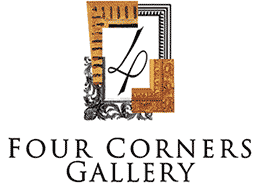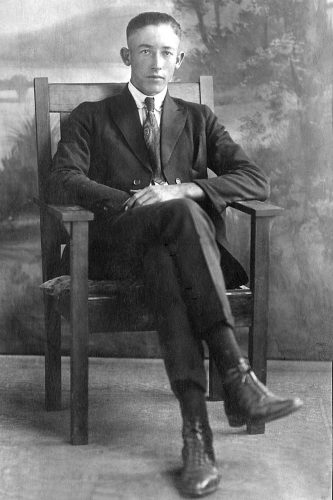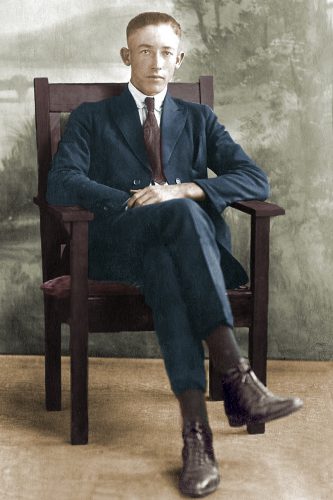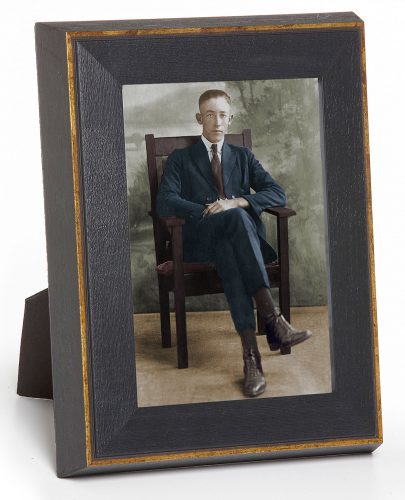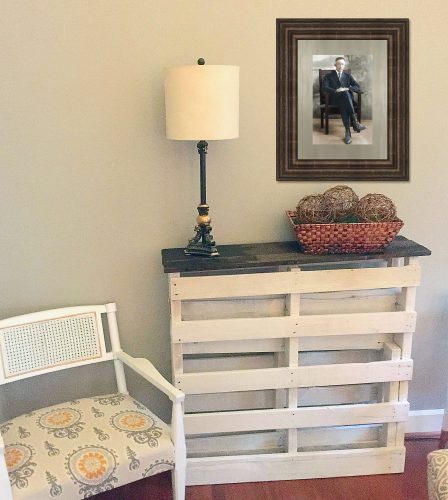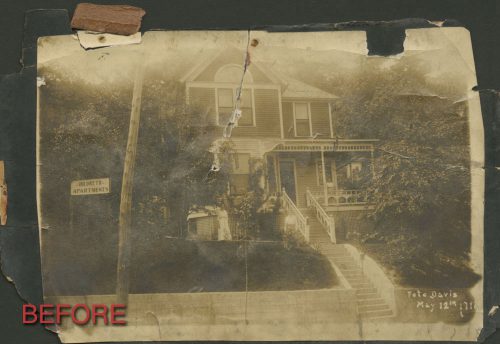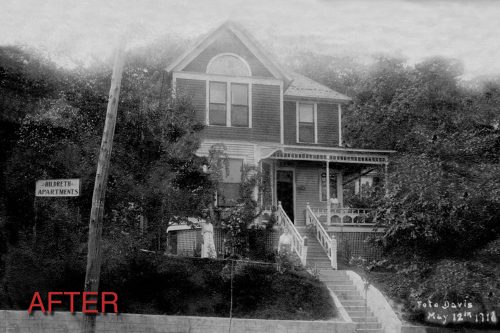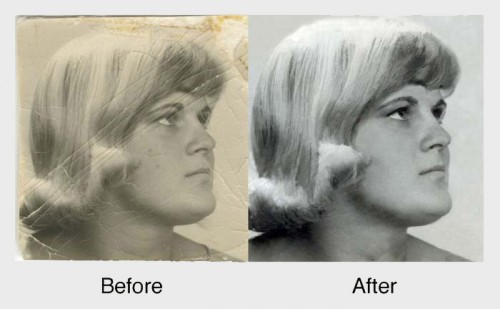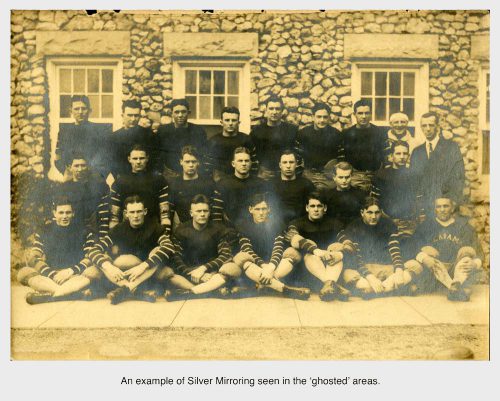One of our specialties at Four Corners Gallery is turning an old or damaged photo into something even better than the original through photo restoration. We use state-of-the-art digital imaging techniques to restore prints of your cherished photographs to share with friends and family. Only the finest materials are used to ensure their survival — Epson Ultra Chrome pigmented inks that will last 100 years or longer and acid-free archival papers of all kinds. Improvements are be made by enhancing contrast, sharping details, adjusting the color balance, removing blemishes, and repairing torn or missing pieces. Similarly, we can eliminate unwanted details, such as distracting background patterns, to improve the composition of the photo. This photo is of our client’s great-grandfather.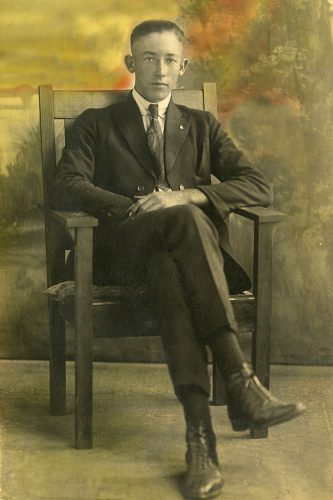
As you can see, over time, the page of the photo album that the photo was mounted in had caused the photo to yellow overall and to have some discoloration around the head and shoulders. Left untreated, this photo would eventually begin to disintegrate. We were able to scan this family heirloom into our computer and convert it into a rich black and white print as part of our 1 hour photo restoration service, shown here:
But the client had mentioned how there were other heirloom hand tinted images in her home and she wondered if this new image could match the existing. We were able to create a digital hand tinted look, shown here, as part of a roughly 2 hour photo restoration service:
We have a large selection of tabletop frames that are ready-to-go. This Roma Stone Etched Black frame perfectly complemented the photo:
But, as I mentioned, this client wanted to hang the photo in her home, so we chose a beautiful Larson Juhl Etrusca frame with an antique pewter acid-free mat.
Contact us today for our photo restoration services. Whether you are in the Birmingham, AL area, or anywhere else, we are ready and able to assist you in preserving your memories while creating a new work of art for your home.
